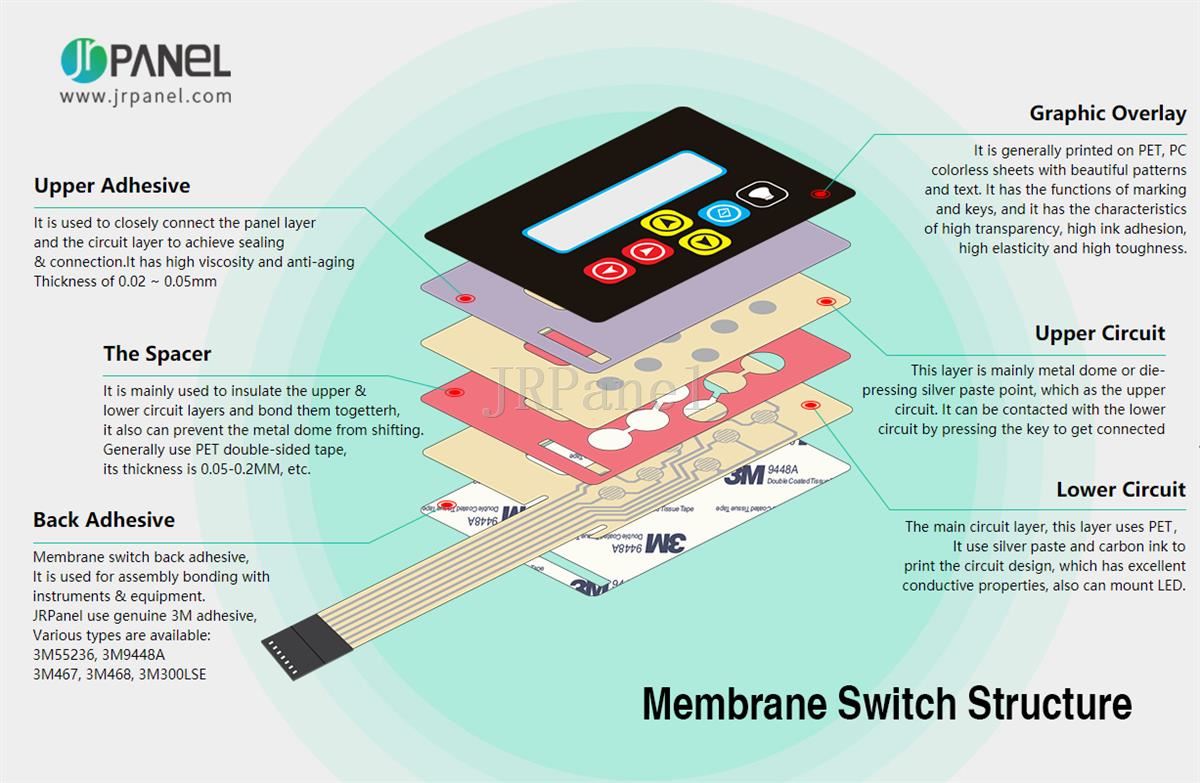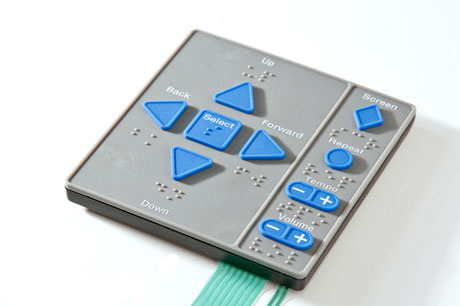How Membrane Switches Give Smooth Operation in Harsh Environments
How Membrane Switches Give Smooth Operation in Harsh Environments
Blog Article
Membrane Layer Switches Over Explained: A Comprehensive Guide to Their Advantages
Membrane changes stand for a flexible and sophisticated option for developing interface across a range of industries. Their multilayered layout not just guarantees performance with easy pressure yet likewise provides substantial advantages, such as toughness and customization. As industries increasingly look for dependable and efficient control interfaces, recognizing the particular benefits and applications of membrane switches becomes vital. Nevertheless, the ins and outs of their style and application present distinct difficulties that merit more detailed exam. What aspects should be thought about to completely leverage their possibility in contemporary applications?
What Are Membrane Layer Buttons?

When stress is put on the membrane switch, the layers make call, finishing an electric circuit. This straightforward device enables a variety of applications, from consumer electronic devices to industrial machinery. Membrane layer buttons are typically developed to be immune and waterproof to dirt and pollutants, making them appropriate for atmospheres where durability is crucial.
Furthermore, the flexibility of the products made use of in membrane layer switches helps with ingenious styles that can adapt various forms and measurements. This flexibility adds to their appeal in diverse fields, including medical gadgets, automobile controls, and home appliances. Generally, membrane layer switches over stand for an important aspect in modern-day interface technology, bridging the gap between users and electronic systems.
Secret Advantages of Membrane Buttons
Amongst the myriad of interface choices offered, membrane switches over stick out for their one-of-a-kind mix of benefits. One of the key benefits is their lightweight and portable layout, which enables assimilation into a large range of tools without including considerable mass. This is particularly beneficial in applications where area is restricted.
Furthermore, membrane switches over deal durability and resistance to ecological aspects. They are normally constructed with products that can endure dampness, dust, and various chemicals, making them ideal for rough problems. This sturdiness adds to a longer life expectancy compared to traditional mechanical buttons.
One more substantial benefit is the adaptability in modification. Membrane switches can be printed with various graphics, colors, and structures, enabling customized designs that fulfill particular branding or functional demands. This versatility includes the variety of layers and circuit alternatives, supplying engineers with numerous setups.
Moreover, the tactile responses offered by some membrane layer changes enhances individual experience, making them a lot more user-friendly to operate. Last but not least, the ease of cleaning and upkeep additionally solidifies membrane layer switches as a practical choice in both customer and industrial applications. Membrane Switches. Overall, these key benefits make them a preferred remedy for lots of developers and suppliers
Applications in Different Industries
Just how do membrane layer switches find their area across diverse sectors? Their versatility and functionality make them important components in markets varying from healthcare to consumer electronic devices. In medical tools, membrane layer buttons are used for their convenience of cleaning and resistance to contamination, making certain health in settings where sterility is vital.
In the customer electronics market, these buttons provide streamlined, straightforward user interfaces that boost item visual appeals while preserving toughness versus damage. Automotive applications profit from membrane layer switches as well, where they are utilized in control panels and control panels, providing dependable efficiency in challenging problems.
In addition, commercial machinery employs membrane layer switches for control board due to their effectiveness, ability to endure severe environments, and customizable styles that deal with particular functional needs. The food market leverages membrane switches for their simplicity of usage and resistance to spills, guaranteeing functional performance in hectic settings.
Inevitably, the versatility of membrane layer switches throughout these varied applications highlights their necessary role in modern technology, improving individual communication while Check Out Your URL satisfying industry-specific requirements. Their continued advancement promises further integration right into emerging fields and ingenious products.
Design and Personalization Options
The style and customization alternatives readily available for membrane buttons are vital for tailoring interfaces to fulfill specific customer needs and visual preferences. These switches can be made in different forms, dimensions, and layouts, enabling seamless combination into diverse applications. The flexibility in design suggests that suppliers can create one-of-a-kind interfaces that boost functionality and preserve brand name identification.
Custom-made graphics, structures, and colors can be related to the surface of the membrane switch, offering a possibility for branding and individual engagement. In addition, backlighting choices, such as LED illumination, can be incorporated to boost exposure in low-light conditions, hence enhancing performance.
Useful elements can additionally be tailored, including tactile feedback and actuation force, which can be readjusted to fit various customer interactions. The choice of materials, such as polyester or polycarbonate, allows for variations in longevity and environmental resistance, accommodating the details needs of different industries.
Inevitably, the substantial layout and customization capacities of membrane buttons allow firms to develop visually enticing and easy to use user interfaces, ensuring that their products meet both aesthetic and functional needs browse around here efficiently. Membrane Switches.
Factors To Consider for Implementation
Carrying out membrane switches needs cautious consideration of different elements to ensure optimal performance and customer experience. Aspects such as exposure to moisture, extreme temperatures, and chemical materials can substantially influence the button's performance and long life.

An additional essential aspect is the switch's design and layout. Making certain that the tactile responses and actuation force line up with customer assumptions enhances use. Performing customer screening can give valuable understandings right into the optimum style.
In addition, compatibility with digital elements have to be evaluated. The switch's wiring ought to align with the total system style, ensuring reputable signal transmission and minimizing disturbance.
Moreover, production approaches and costs need to be examined. The option between custom-made styles and common versions can lead and affect both spending plan time.
Lastly, consider upkeep and repair service. Membrane layer switches may call for details cleaning and treatment treatments to maintain their appearance and capability over time. By resolving these considerations, organizations can visit here apply membrane switches that fulfill their functional requirements while providing a favorable user experience.

Final Thought
In final thought, membrane layer switches represent a versatile and durable control interface ideal for a variety of applications across multiple sectors. Their small layout, resistance to environmental factors, and personalized attributes improve user experience while meeting specific branding requirements. As technology continues to develop, the importance of membrane buttons in modern-day gadgets continues to be substantial, supplying both performance and aesthetic charm. Future advancements will likely additionally broaden their applications and performance in various settings.
Membrane layer switches over stand for a flexible and innovative solution for creating individual interfaces throughout a selection of industries.Recognizing the basic parts of modern-day digital user interfaces, membrane buttons are a kind of individual interface gadget that are composed of versatile, slim layers of material. In general, membrane switches represent a critical component in modern-day user interface innovation, connecting the space in between customers and digital systems.
Amongst the myriad of customer interface alternatives readily available, membrane layer switches over stand out for their one-of-a-kind mix of benefits.The layout and modification choices offered for membrane buttons are essential for tailoring user interfaces to fulfill certain individual needs and aesthetic preferences.
Report this page